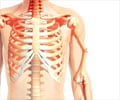J. Oral Maxillofac. Surg. 2020 Jan 07
Open Reduction Effects of Digitally Treating Zygomaticomaxillary Complex Fractures With Bio-Resorbable Materials.
Yan G, Zhang R, Chuo W, Gao X, Zhou Q, Yang M
The application of bio-resorbable plates in craniomaxillofacial surgery is increasing because of the advantage of avoiding secondary surgery. This stu ...
Read More
Source: PubMed
Biomech Model Mechanobiol 2020 Jan 27
An adaptive-remeshing framework to predict impact-induced skull fracture in infants.
He J, Yan J, Margulies S, Coats B, Spear AD
Infant skull fractures are common in both accidental and abusive head trauma, but identifying the cause of injury may be challenging without adequate ...
Read More
Source: PubMed
Plast. Reconstr. Surg.
Bone Tissue Engineering in the Growing Calvaria Using Dipyridamole-Coated, Three-Dimensionally-Printed Bioceramic Scaffolds: Construct Optimization and Effects on Cranial Suture Patency.
Maliha SG, Lopez CD, Coelho PG, Witek L, Cox M, Meskin A, Rusi S, Torroni A, Cronstein BN, Flores RL
Three-dimensionally-printed bioceramic scaffolds composed of ß-tricalcium phosphate delivering the osteogenic agent dipyridamole can heal critically s ...
Read More
Source: PubMed
Braz J Otorhinolaryngol 2020 Jan 14
Top-cited articles in cerebrospinal fluid leak (rhinorrhea and otorrhea) (1945-2018).
Monjas-Cánovas I, Belinchón-Romero I, Gras-Albert JR, González-Alcaide G, Ramos-Rincón JM
As scientific knowledge has grown in biomedicine, it has also become necessary to develop tools to manage and understand the body of evidence. In that ...
Read More
Source: PubMed
Acta Chir Orthop Traumatol Cech
[First Experience with Cranioplasty Using the Polyetheretherketone (PEEK) Implant - Retrospective Five-Year Follow-up Study].
Šámal F, Ouzký M, Strnad J, Haninec P, Linzer P, Filip M
PURPOSE OF THE STUDY Cranioplasty is currently the most common neurosurgical procedure. The purpose of this study is to describe the first experience ...
Read More
Source: PubMed







